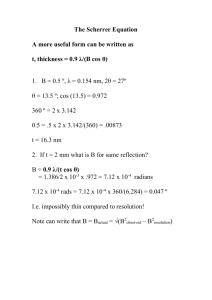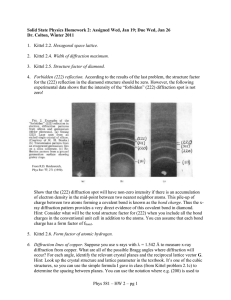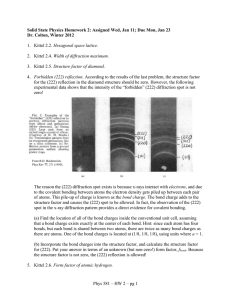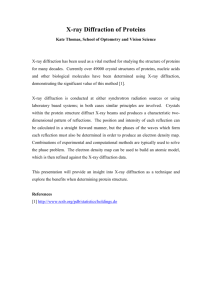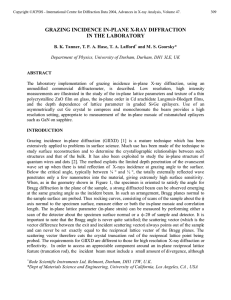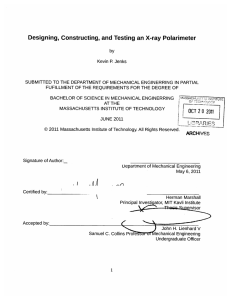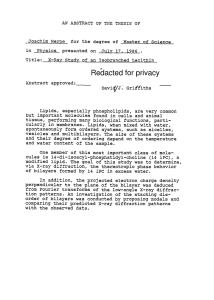DIFFRACTION FROM CRYSTAL PLANES
advertisement
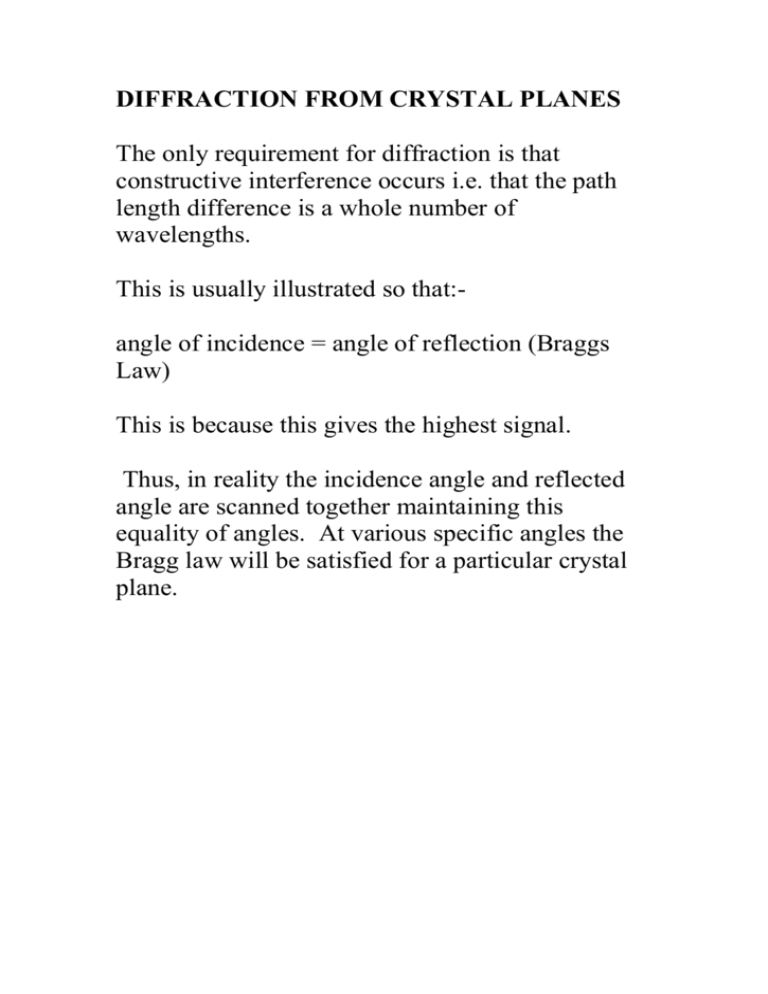
DIFFRACTION FROM CRYSTAL PLANES The only requirement for diffraction is that constructive interference occurs i.e. that the path length difference is a whole number of wavelengths. This is usually illustrated so that:angle of incidence = angle of reflection (Braggs Law) This is because this gives the highest signal. Thus, in reality the incidence angle and reflected angle are scanned together maintaining this equality of angles. At various specific angles the Bragg law will be satisfied for a particular crystal plane. Two reflections from different planes Lets imagine one piece of solid. That satisfies Bragg reflection as shown. We will observe strong diffraction But if the planes are misaligned We will observe no diffraction In any real solid we have a chance orientation. It would be almost impossible to study diffraction. However, 99% of all materials are polycrystalline or can be prepared (by grinding) so as to present many grains of material. In these some will always be at the correct alignment. Those planes at the right orientation will give strong diffraction Basis of POWDER X-RAY DIFFRACTION EXPERIMENTAL SET-UP Modern machines rotate the x-ray source and the detector. detector source sample X-ray sources are cumbersone. To generate sufficient signal need to generate lots of power i.e x-rays. Frequently run at 50 kV and 50 mA. anode e’s 5V -ve 50 kV +ve filament Moving these are difficult because of the electric supplies and water used to cool anode to prevent melting. Older machines moved detector through 2Θ and sample through Θ. This maintains angle incidence = angle of reflection. For historical reason we plot intensity versus angle 2Θ X-RAY LINE BROADENING When x-rays enter a solid they undergo refraction. For x-rays this is very small. But the refraction angle differs from the incidence angle by only parts per thousand. But because of this the path length difference slowly varies from planes deeper into the material. The constructive interference slowly becomes destructive. Provided the sample is thick enough (if a sample is 10 μm there are 1 x 10-5/10-10 atom planes = 105) then all these slightly out of phase reflections will cancel. Leave just the perfect constructive interference feature. Shown by rocking curves. Scan detector across the diffracted beam. 2500 intensity 2000 1500 1000 500 0 44.8 45 45.2 45.4 45.6 45.8 46 46.2 angle 2-theta Called rocking curve – it is a measure of how crystalline a material is. A Si wafer rocking curve could have a rocking curve of 0.1 mrad. If the samples are thin incomplete cancelling is observed. The diffracted peaks are not narrow they become broad. The broadness can be used to estimate the sample thickness. Formulism was drawn up by Scherrer:Sample thickness, t = 0.9 λ/(B cos θ) B = Bactual = √(B2obs – B2o) where Bobs = FWHM of reflection Bo = instrumental FWHM minimum
